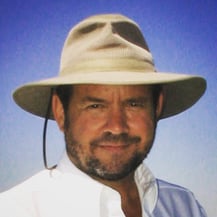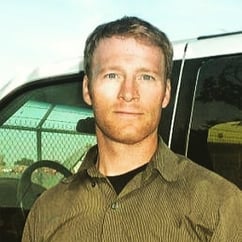
We know our community of growers never wants to stop learning ... but we also know they're too busy most days to spend much time in front of a screen. That's why Ceres Imaging has partnered with the California Ag Network to bring you Advances in Imagery, an audio series you can listen to from anywhere.
Each episode, we’ll feature leading experts and top producers talking through the latest data innovations in agriculture—and what really works at the farm level. By taking a short quiz after listening, you can even earn CCA credits in nutrient management.
Here's a quick look our first episodes that debuted earlier this month:
Episode 1: Advances in Fertility Management for Wine Grapes
We kicked off the series with our first guest, Lowell Zelinski, who heads up the Independent Grape Growers of the Paso Robles Area . With more than 30 years in the business, he shared the long view on his early experiences using NDVI imagery—including some of the worst mistakes he made when he was just starting out. "I always think, back [on these mistakes] and think, 'I should have known this.' I shouldn't have needed the aerial imagery to point it out to me," he says. Of course, hindsight's 20/20, and Zelinski credits aerial imagery with helping him develop the expertise he has today. "I learned a lot from it. You learn to look at more than just a flat map of something, because that doesn't really describe all the interactions going on."
Jerome Pier of Nutrien Ag Solutions offered his take on new practices in nutrient management for wine grapes. High on his list of new technology to watch: genetic analysis for soil health. "Wine grape growers are starting to get more interested in uniformity to try and maximize the quality of the final product," he observes. "Getting down into the soil and trying to see how that soil can supply nutrients to the vineyard is going to be the next step. The genetic analysis—like 23andMe or Ancestry.com—that same type of machinery can be used to analyze the DNA in the soil, and we're finding that quite fascinating."
Episode 2: Advances in Fertility Management for Tree Nuts
On this episode we talked tree nuts with David Doll—better known as the Almond Doctor. When it comes to dialing in nutrient programs to maximize growth of young trees, he relies on a combination of findings from the research world and the "hard and true wisdom" of implementation—and even now, he never stops experimenting. "When you move into operations, the flip end is, how do you execute all these different aspects [of the research] to provide the growth rate you want ," he says. "There are some tools that I’ve learned over the past eight months in development that you don't necessarily keep in mind because it’s not what's in the textbooks."
Asked what nutrient management practice deserves more attention, Doll is quick to respond. "One consistent issue I've seen in 15 years in the California almond industry is the lack of accounting for variability of the soils," Doll says. "And I know many people are probably rolling their eyes and saying, 'Well, what am I supposed to do about that now? My trees are already planted; I can't really control that.' And my answer to that is: exactly! We need to account for the soil type differences that we see."
For more information on the series, visit advancesinimagery.com. If you've already listened in, check your email for a link to a short quiz that will earn you a CCA credit in nutrient management. Most importantly: we want your feedback! Is there a topic you're interested in covering in future episodes, or someone you'd like to hear on the air as our next guest? Leave us a comment and let us know.
Precision agriculture Vineyards Tree nuts Advances in Imagery

